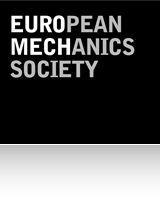640 – Gradient mechanics across materials, processes and scales
Chairperson:
Elias C. Aifantis
Laboratory of Mechanics and Materials
School of Civil Engineering
Faculty of Engineering
Aristotle University of Thessaloniki
GR-54124, Thessaloniki, Greece
Email: mom@mom.gen.auth.gr
Co-chairperson
Harm Askes
University of Twente
The Netherlands
Amit Chattopadhyay
Aston University
UK
Purpose: Address the potential and future role of theoretical, experimental and computational nonlocal/gradient mechanics in engineering, physics and chemistry, materials science and geology, as well as biology and medicine, by assessing:
(i) where we stand;
(ii) what we have missed;
(iii) where we go from here.
Topics: Focus on gradient enhanced deformation theories (elasticity / viscoelasticity / plasticity and failure / damage / fracture), as well as fluid flow / rheology and mass / heat transport processes. The need for higher-order gradients in electrostatics and electrodynamics will be discussed. The role of stochasticity and fractionality / fractality on gradient models will be considered. Novel multi-probe / multi-imaging techniques and advanced multi-scale / multi-physics codes will be reviewed in relation to experimentally evaluating and numerically implementing the new gradient terms. Direct implications on the following areas of interdisciplinary science, energy storage and climate change will be considered:
(i) nanocrystalline (NC), ultrafine grain (UFG) materials and multilayered NEMS/MEMS;
(ii) next generation batteries, capacitors and solar cells;
(iii) lasers, plasmas and fusion; (iv) snow avalanches, landslides and earthquakes. Finally, possible implications of nonlocality and memory effects on neurons / brain functioning, sound / music technology and finance / stock market performance will be explored.
